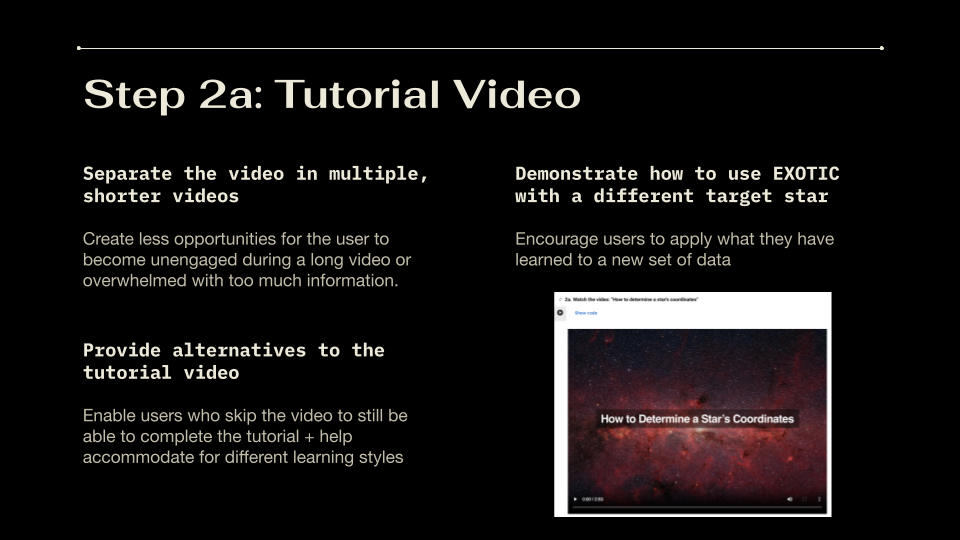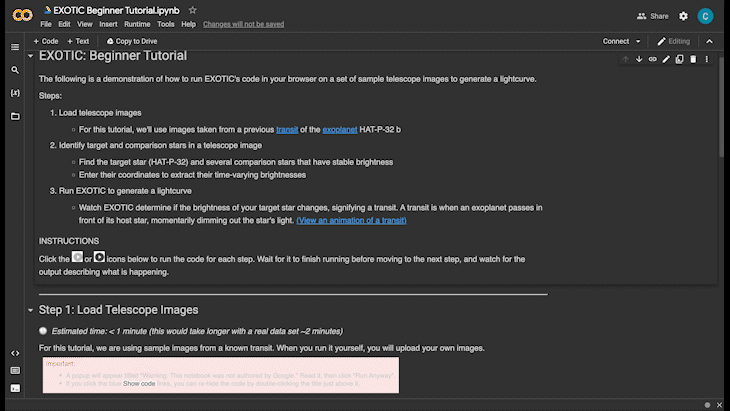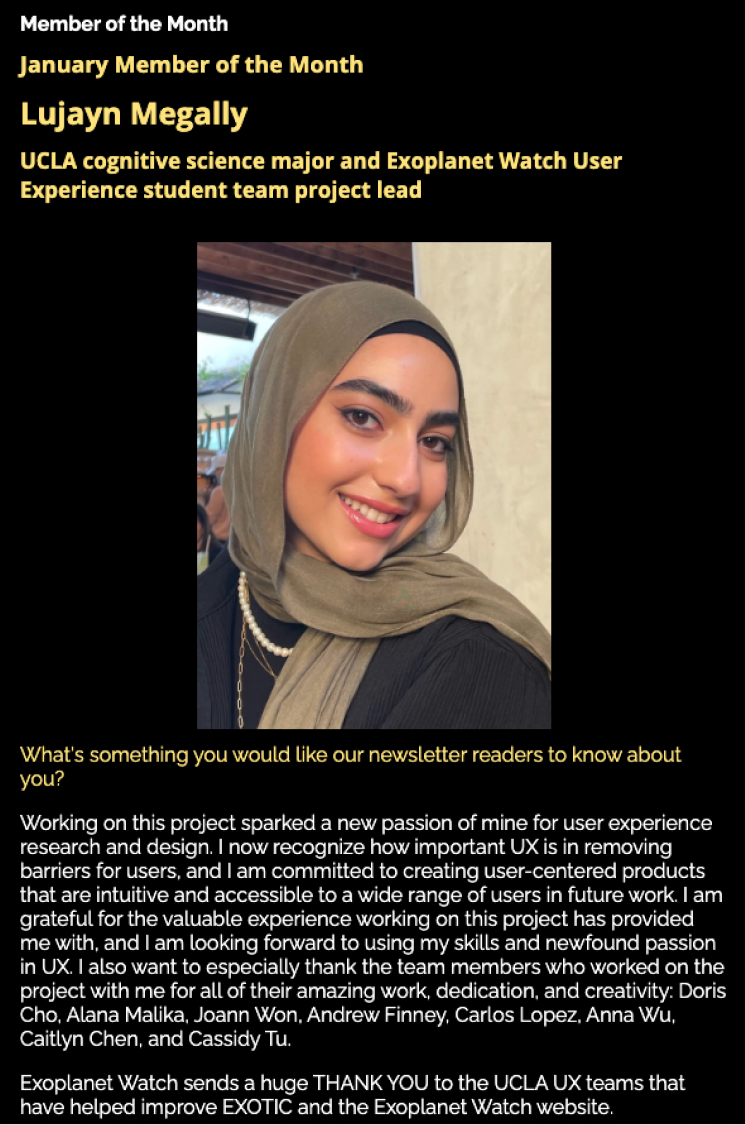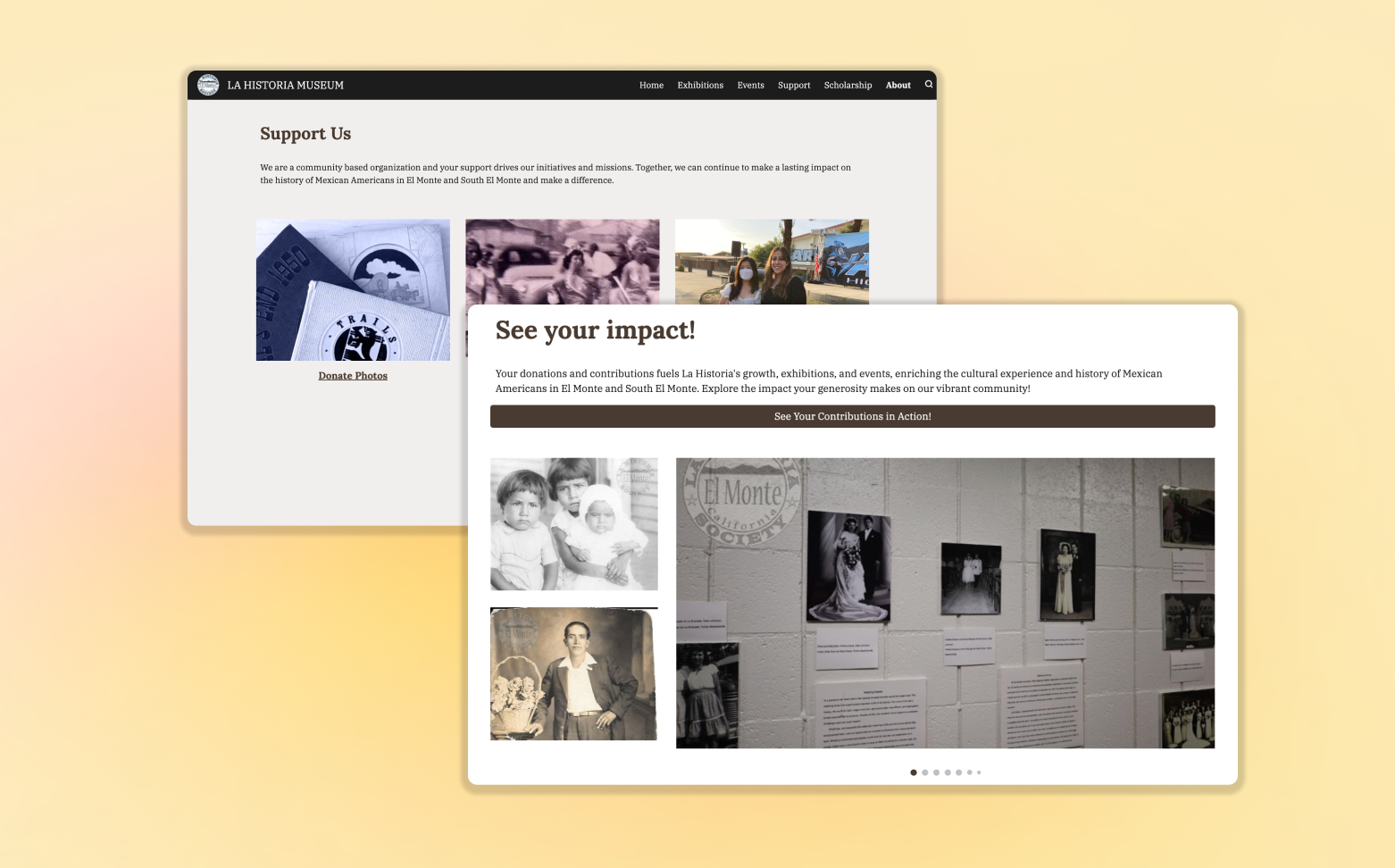| Role | Team | Tools | Timeline |
|---|---|---|---|
| UX Researcher | Anna W. | Miro | Oct '22 - Dec '22 |
| Caitlyn C. | FigJam | ||
| Google Sites |
You don't have to be a rocket scientist or an astrophysicist to participate in studying the distant world of exoplanets. When you look up into the night sky, do you ever wonder what's out there beyond our solar system? Exoplanet Watch is a NASA citizen science project that lets anyone learn and contribute to exoplanet observation data through their Exoplanet Transit Interpretation Code (EXOTIC) software.
However, doesn’t this all still seem too daunting and complicated for astronomy beginners?
This is where we come in.
We were tasked to assess the usability of the EXOTIC Software tutorial and how appealing it was to targeted users. They ranged from high school to college students with less knowledge and experience with astronomy.
This tutorial serves as a bridge for these users to be introduced and learn about how to get involved with discovering exoplanets through the software. Therefore, exploring their reactions and feedback to the tutorial is vital to user engagement, retention, and participation, which is the overall goal of our client.
Unveiling the Mysteries of the Universe (and Its Users)
Methods
We conducted usability testing (UT) interviews with 7 college students; 6 of these participants had little to no experience with astronomy and one had an education in aerospace engineering. Of the 7 participants, 3 had never used Jupyter notebooks before the usability testing interview.

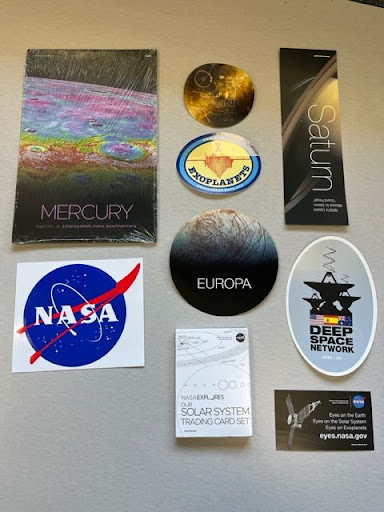
Each interview was conducted using a standard script of questions and tasks. The interviews were conducted on Zoom, where participants shared their screens with the facilitators. We recorded data using an internal-facing Google Form with all of our questions, and these interviews were also recorded for future analysis.
Charting the Uncharted Territories:
Product Reaction Word Cloud
We created a word cloud out of words our participants chose to describe their experience with the EXOTIC tutorial to find the most common reactions. On first glance, the word cloud depicts a mix of positive and negative reactions towards the tutorial, with words like "overwhelming" and "convenient" seemingly similar in size.

However, when the top 5 most selected words are counted (depicted in the table below), we can see that 3 out of the top 5 words that participants resonate with the most lean more towards a negative reaction to the EXOTIC tutorial.

Charting the Uncharted Territories II:
Affinity Mapping
After looking at our quantitive data, we grouped qualitative data from our interviews into thematic ideas to find the most common user pain points and successes.

01. Lack of information hierarchy
Users who had never used a Jupyter notebook were immediately intimidated by all the information. Other users underestimated the amount of time the tutorial would take to run because of the length text.
"It's so many words, I feel like I don't even know where to start reading.” (P6)
“What the f*** is this?” (P5)
02. Plug and chug
Users plugged in numbers and followed instructions, but were not confident in replicating this process with new data. Data input caused a lot of confusion and involved tedious back and forth scrolling.
"I don’t know if I could do this by myself.” (P3)
03. Unclear material
Users did not understand when/where to input values and could not interpret the end results presented. This decreased satisfaction and limited the EXOTIC’s impact as a tool. Terminology was confusing for everyone, regardless of experience.
“A lot of things are happening, there are a lot of numbers I don't know, it looks fancy.” (P2)
"I have no idea what I'm looking at." (P4)
04. Videos had mixed reactions
Some enjoyed it, some preferred shorter videos, and others did not view them at all.
“Whenever it comes to videos embedded, I never really watch them.” (P4)
“I really liked the video because it was a break from all the reading.” (P5)
Charting the Uncharted Territories III:
Experience Mapping
Using our affinity map, we illustrated our persona's, a novice college student astronomer, journey as they used the EXOTIC tutorial for the first time to fully understand when and where the pain points we found occurred and find opportunities for improvement at those stages.



